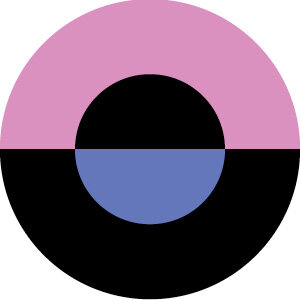4 Must-Have Elements for a Successful Website
It’s not enough to throw up a template, add some photos, write some copy and call it good.So, how exactly do you ROCK YOUR WEBSITE? These are my essential elements of a kick-butt website: quality content, basic SEO, smart calls-to-action, killer design, and one super secret element I'll tell you about at the end of this post.
The Purpose of Your Logo - It's Not What You Think It Is!
So, let's just make it super clear from the start that logos are not meant to communicate or describe what a business does. Your business name, your tagline, your website copy - all of that can say what you do, but your logo doesn't have to and maybe even shouldn't.
So what the heck should your logo do then? In a nutshell, your logo should visually represent your brand in a way that gets people to connect with and remember it. And, it should distinguish your business from other businesses.
6 Crucial Steps for Website Success
Planning the structure and content of your site in advance will do wonders for keeping your website project on budget and on schedule. Realizing half way through the process that you need additional pages or that the flow of the site needs to be changed up or even that content has to be rewritten adds to the work your designer needs to do, which adds to the cost of the site and the time it requires to complete. So, take my advice and sit down and take these actionable steps before you hire that snazzy designer (note: you can also hire a strategist to help you do this), so when she gives you her questionnaire or planner or whatever she uses, you’re all set to go.
How to Create A Killer Color Palette to Boost Your Business
Now that I focus mostly on designing visual brands for online businesses, color is still a huge part of what I do. Truthfully, it’s one of the best ways to distinguish your brand from everyone else’s out there. Color creates emotional reactions and can shape how people think about you and your biz.
According to research, color can increase brand recognition by 80%! And people make sub-conscious judgments about an environment or product within 90 seconds of first impression. Between 62% and 90% of that assessment is made based on color.
Why Branding is A Big Deal for Your Coaching Biz (and what it is in plain English)
So, to start, what the heck is my brand, anyway? To sum it up: your brand is who you are and how you show up in your biz and in life. It's what makes you different from everyone else and their sister. It's your reputation, bad or good. It's what you're known for.
7 Rock Solid Reasons to Rebrand
To rebrand or not to rebrand, that is the question. Most businesses, big and small, need to at least freshen up their brands every several years. Logos might stay the same or only be tweaked very slightly (and very carefully), but brochures, websites, stationery and everything in between, usually needs to be updated every few years.
6 Reasons to Love Squarespace
Now, when business owners who want to create their own sites ask whether they should use WordPress or Squarespace, I recommend Squarespace without hesitation. Don't get me wrong, I think WordPress is an amazing platform, but for most new business owners who don't have a budget, I think it's just too much to handle on their own.
Your Brand Colors are Talking - Do You Know What They're Saying?
We CAN generalize to some degree about the symbolism and meaning attached to various colors, but we should do so with the knowledge that nothing is written in stone or guaranteed. Read on for an overview of various colors and what they are GENERALLY interpreted to mean and what reactions they are likely to evoke.
The Complete Guide to Successful Font Pairing
Finding, choosing and pairing fonts for your brand is an important, and fun, part of designing a brand identity. In an effort to make it more on the fun side, I’ve listed some tips and resources below to help guide you.
How to Pick The Right Fonts for Your Brand
Choosing fonts is one of the most important steps in creating a killer brand identity that will last for the long haul. Fonts (or typefaces), like people and businesses, have different personalities. They can communicate many different messages. They can render a logo unreadable or provide the perfect pitch to complement a logo and reinforce a brand’s personality.












